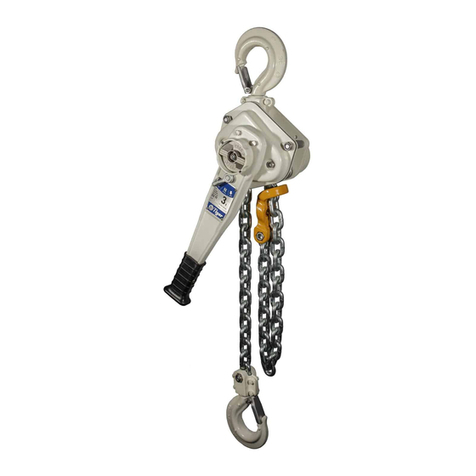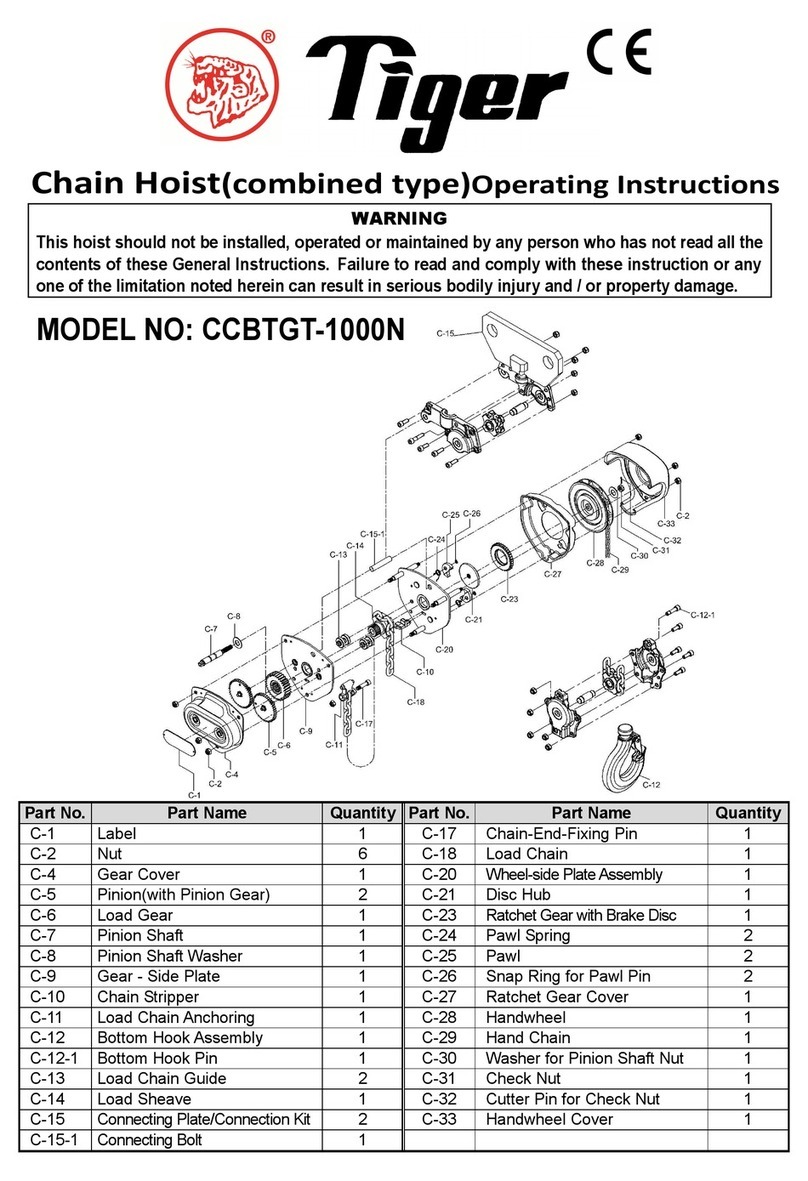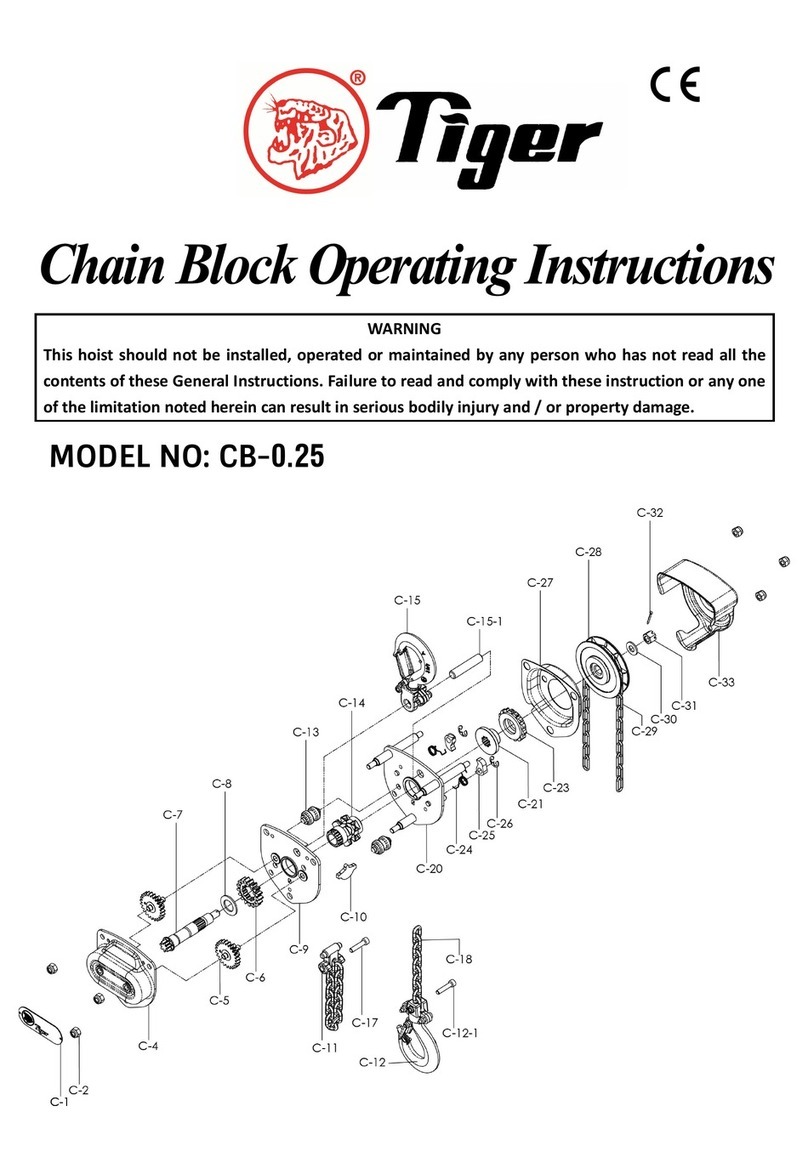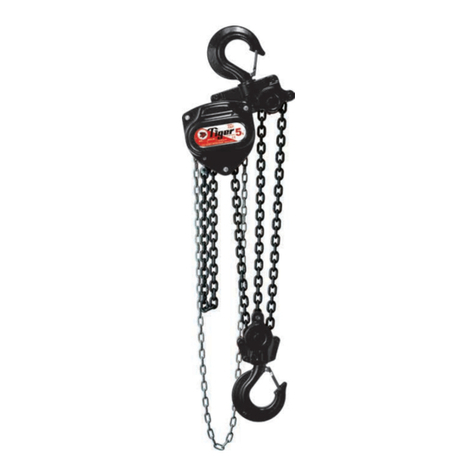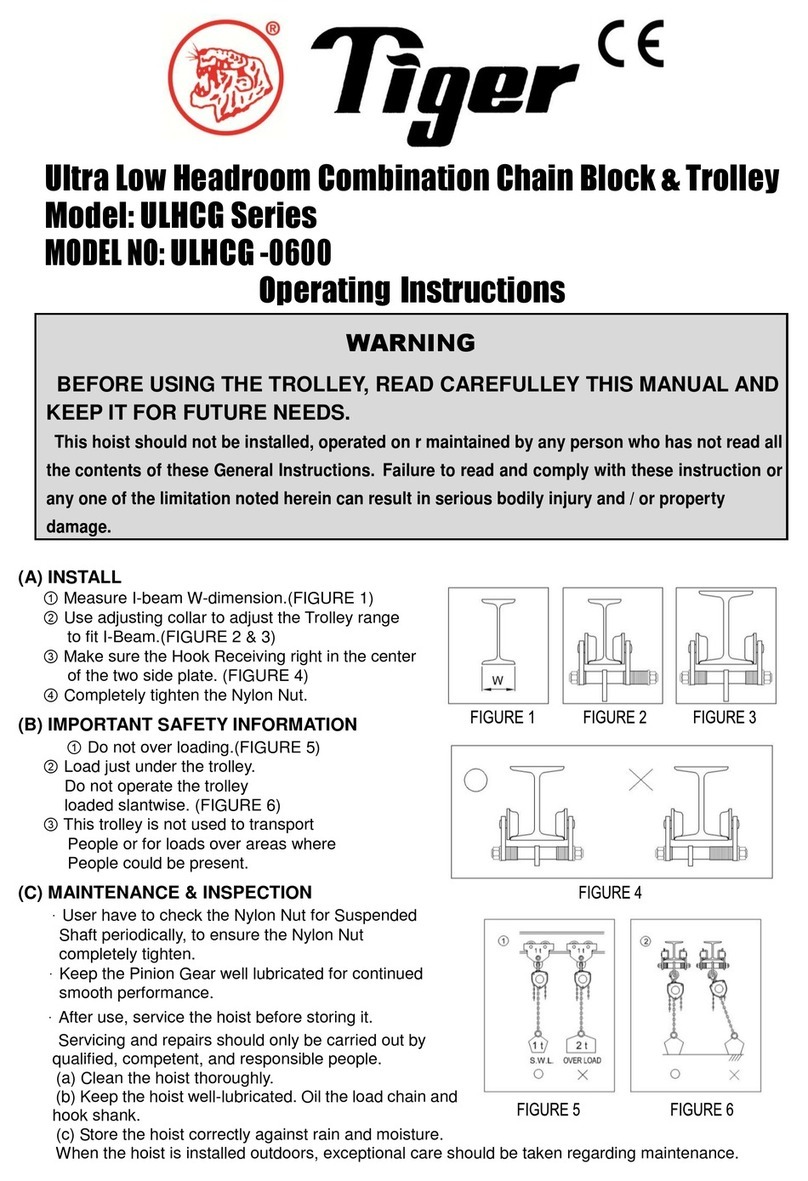
Unit 1, Greensfield Industrial Estate,
Willowburn Avenue,
ALNWICK, NE66 2DG
Email: info@tigerlifting.com
www.tigerlifting.com
Page 4 of 42
Manual Tiger TCB-SS12 En 201605 v3.1
Improper use of chain blocks could result in death or serious injury, to avoid these hazards:
Never attempt to lift more than the rated load capacity (WLL) of the suspension and the supporting structure.
Never allow your attention to be diverted from operating the chain block.
Never attempt to operate this equipment under the influence of alcohol or drugs.
Never wrap the load chain around the load and hook onto itself as a sling/choker chain.
Never insert the point of the hook into a chain link.
Never lift a load if binding prevents equal loading on the load chain.
Never let the load swing or come into contact with other objects.
Never use the chain block to lift, lower, support or transport people.
Never lift a load over people.
Never work near or under hoisted loads.
Never use a damaged chain block or a chain block that is not working correctly.
Never use a chain block which has been taken out of service until it has been properly repaired or replaced.
Never use a hoist if the hook latch is missing or broken (if one is intended to be fitted).
Never splice load or hand chain by using pins, bolts, screw drivers or similar between links.
Never attempt to lengthen the load chain or repair damaged load chain.
Never force a hook or chain into place by hammering.
Never use the chain block with twisted, kinked, damaged, stretched or worn chain.
Never swing a suspended load.
Never support a load on the tip of the hook.
Never suspend a load for an extended period of time.
Never leave a suspended load unattended.
Never run the load chain over a sharp edge; use a sheave.
Never weld or cut a load suspended by a hoist.
Never use the hoist chain as a welding electrode or allow the chain or hook to be touched by a live welding electrode.
Never allow the chain or hook to be used as an earth for welding.
Never use the hoist with rusty chain.
Never run the lower hook block into the chain block frame or bring the load in contact with the chain block. Case and/or
chain guide damage may result.
Never operate the chain block beyond limits of load chain travel or run the hook assembly into the frame of the block.
Never use the chain stop as an operational limit device.
Never operate a hoist if chain is jumping, if there is excessive noise, or if jamming, overloading or binding occurs.
Never use a hoist without both load chain anchoring points correctly fitted.
Never use a hoist without a name plate/label or with illegible name plate/label.
Never use modified or deformed hooks (refer to Chapter 6).
Never use a motor to operate a manual chain block.
Never use a hoist near fire or where hot objects may touch it.
Never use the hoist in temperatures below -40°C (-40°F) or above +50 °C (+122 °F).
Never adjust or repair a chain block unless qualified to perform chain block maintenance.
Never perform maintenance on the hoist while it is supporting a load
Never use the unit for pulling free a jammed load
Never allow loads to drop when the chain is in a slack condition (danger of chain breakage and shock loading).
Never move the load into areas which are not visible to the operator.
Never suspend more than one load lifting attachment in the hook of the hoist.
Never reach into moving parts.
Never throw a hoist or allow the unit to fall from height. Always place it properly on the ground.
Never heat treat nor weld any part of the chain block, especially the load chain.



















